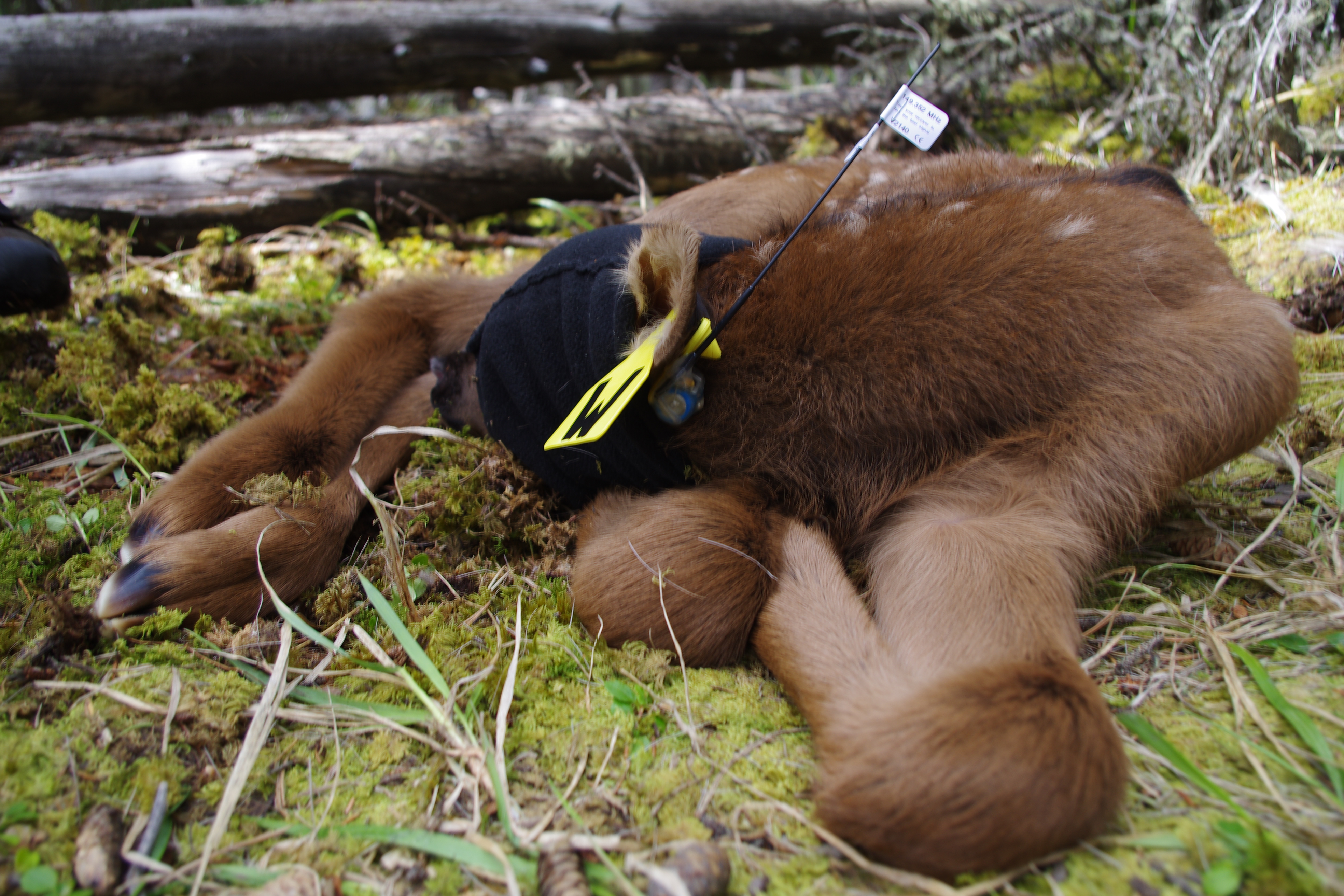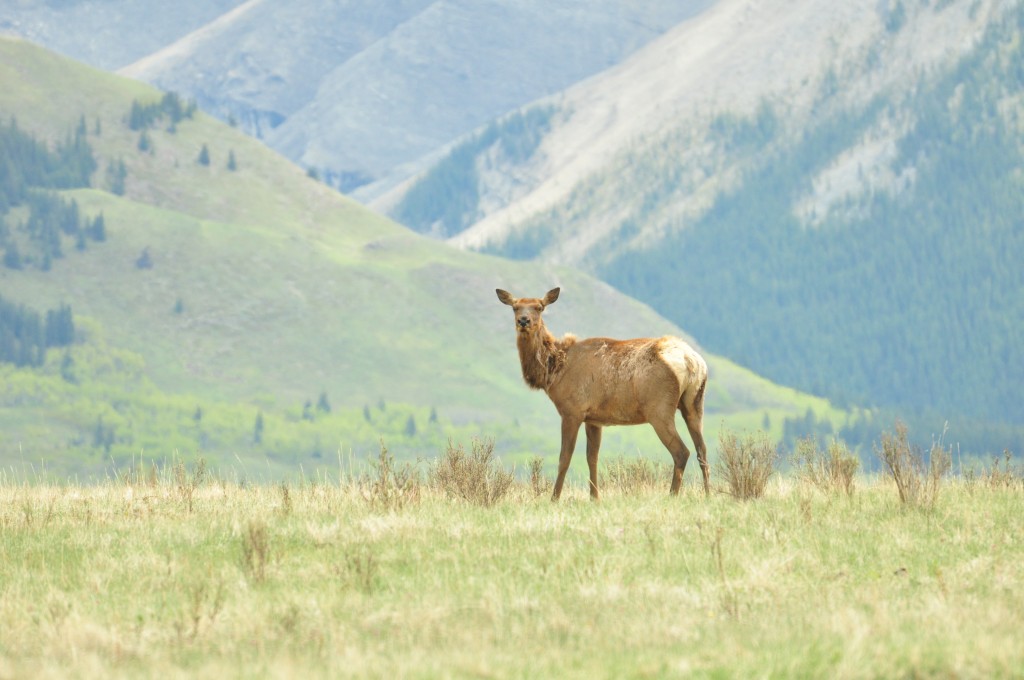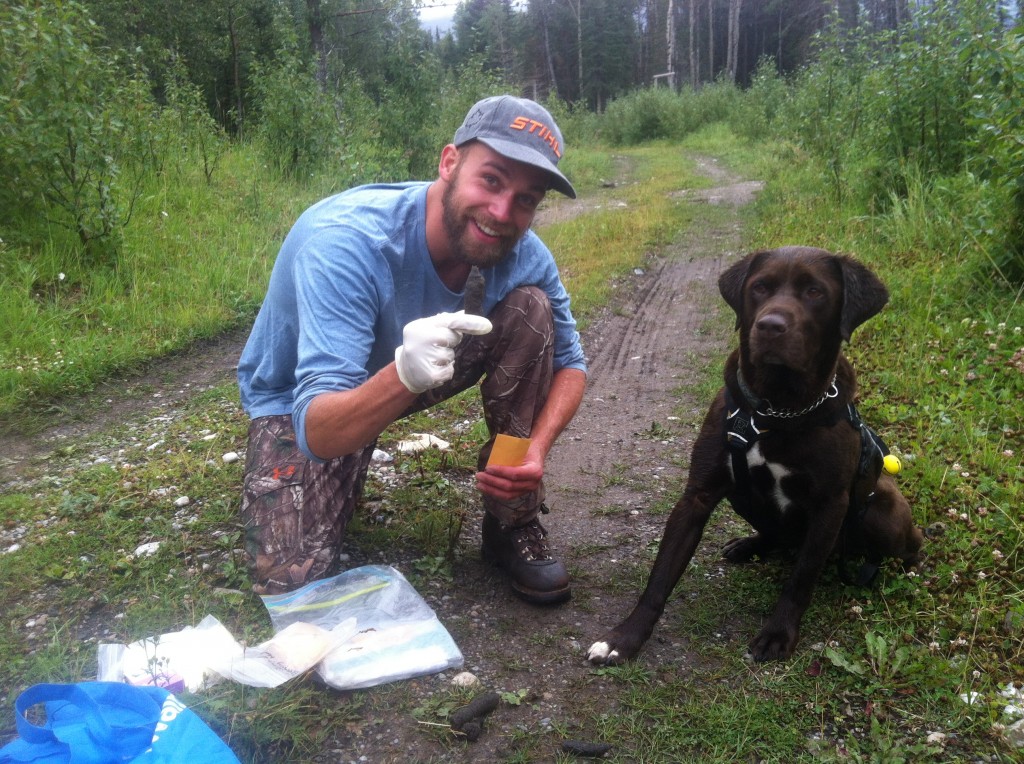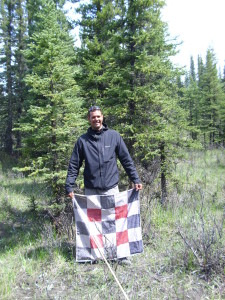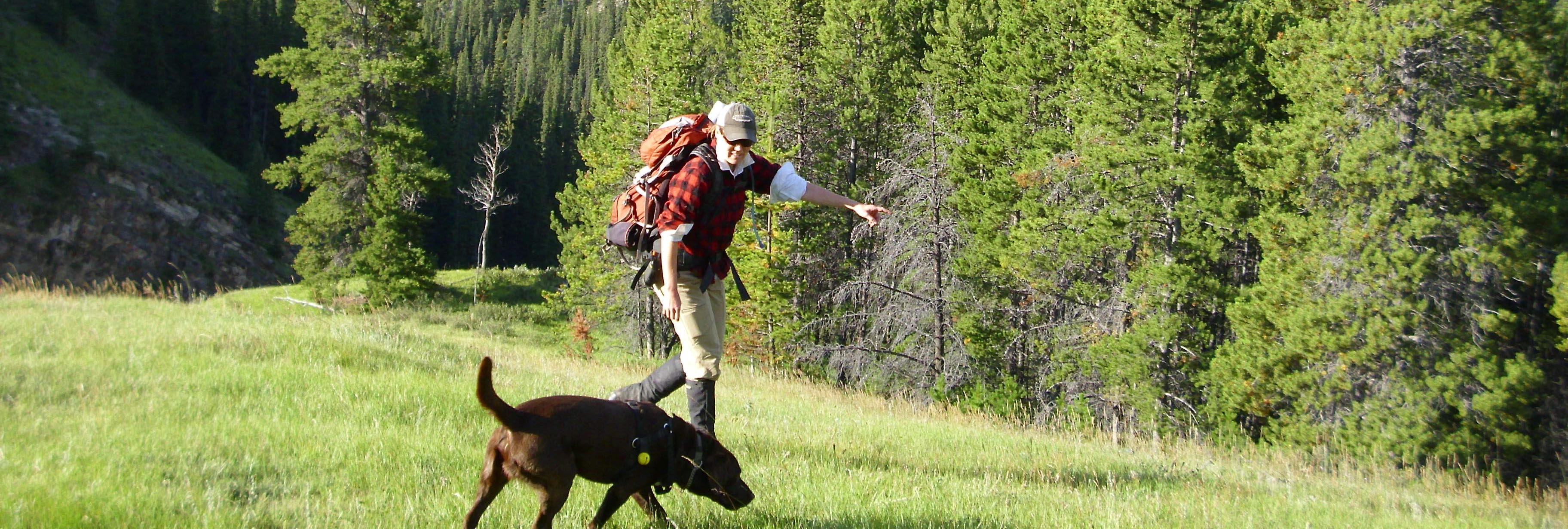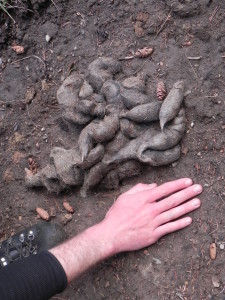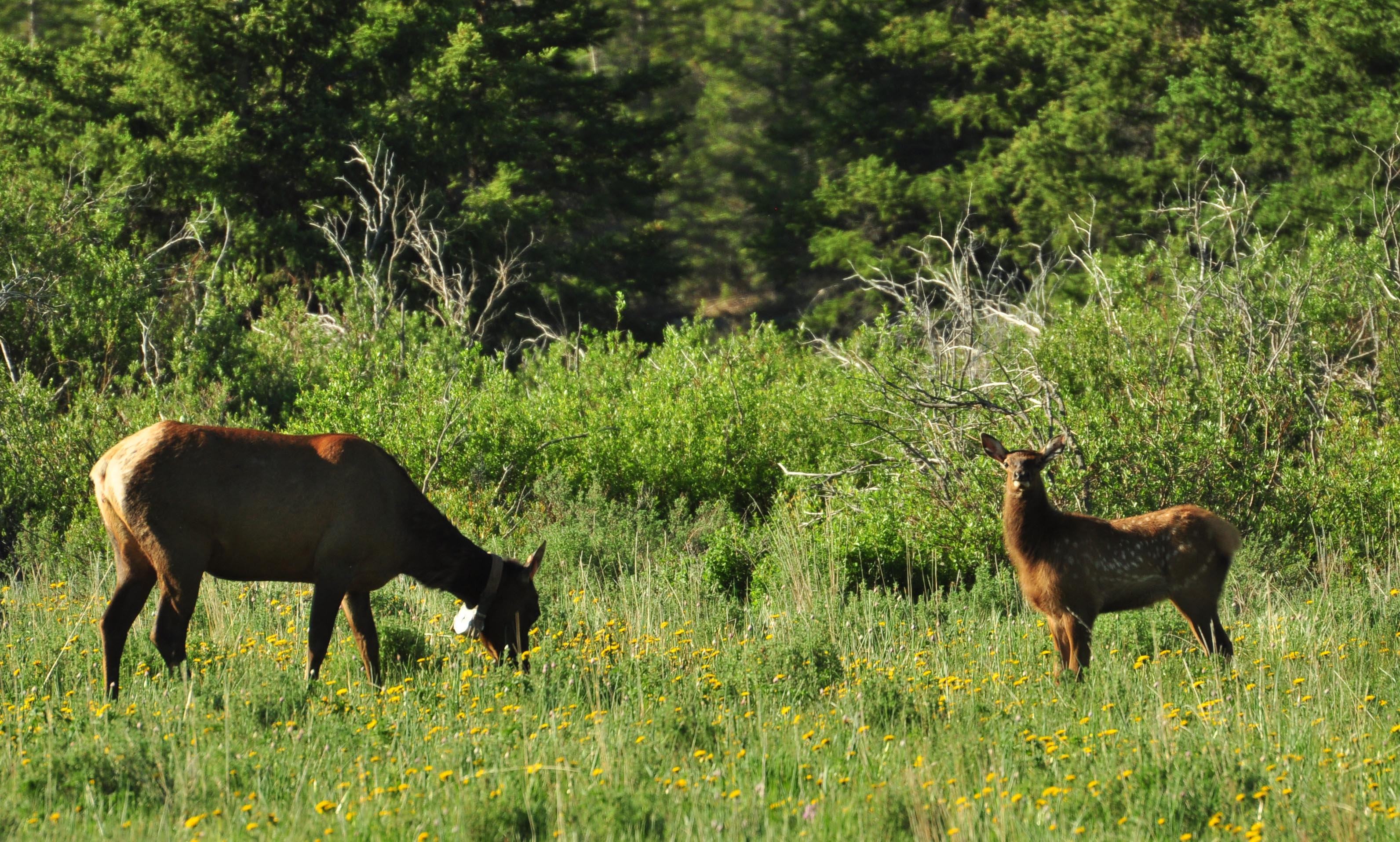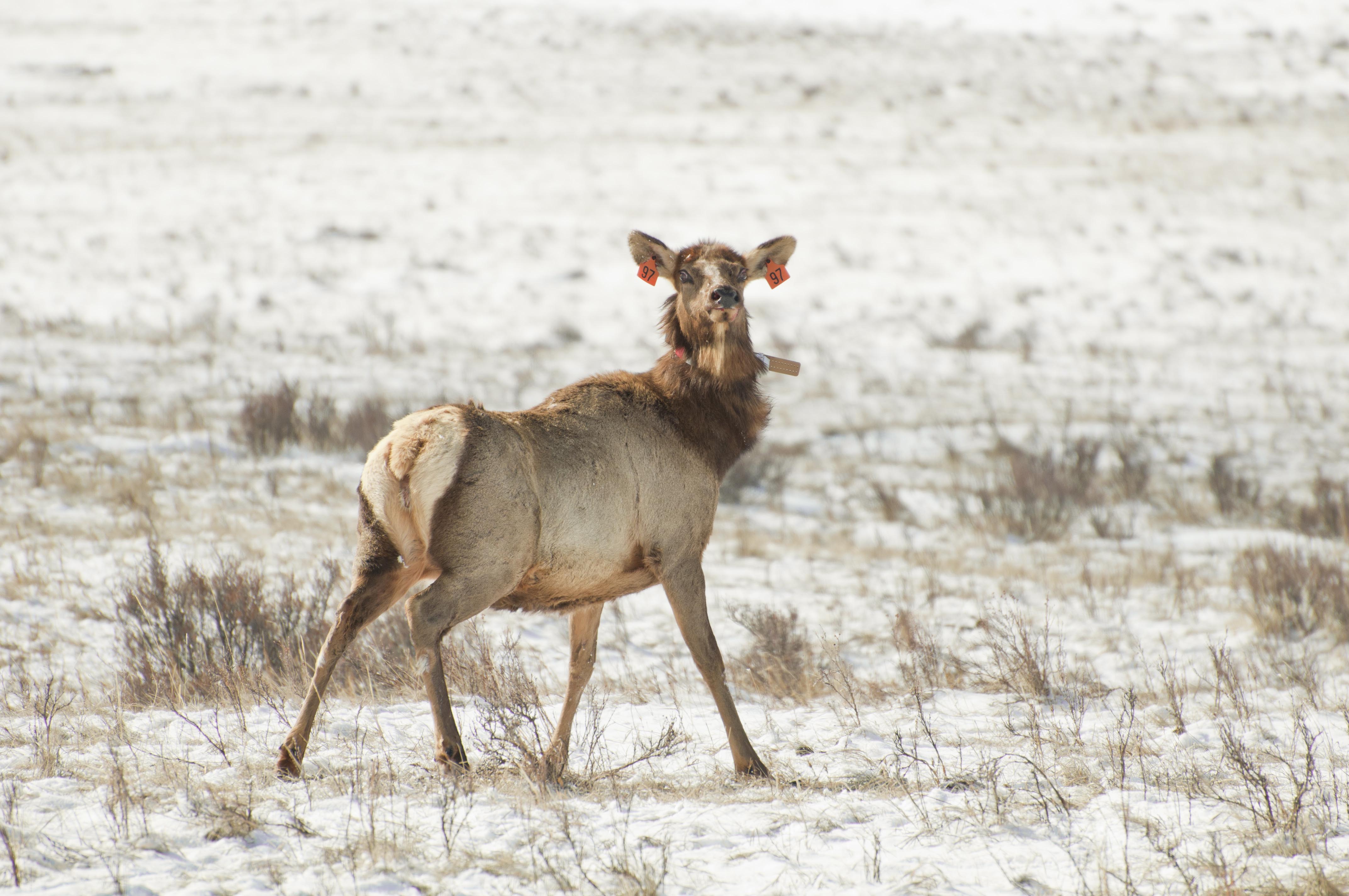Remember when we asked you to stay with us for more exciting news? Well here you go!
Winter 2014
After a successful pilot year, the Ya Ha Tinda elk project started 2014 on a whole new level. Just like the previous year, cows were darted and each equipped with a vaginal implant transmitter (VIT). Only this year we did not only capture 20 cows but 48! As far as pregnancy rates are concerned, the YHT elk are doing well. Out of these 48 females, only one was not pregnant, which equals a pregnancy rate of 94%.
2014 was also the start of a body condition survey. Each captured female was assessed using Cook’s (Journal of Wildlife Management 65: 973-987) body condition score method. In fact, linking female body condition to offspring survival is crucial as it has been shown to be a critical factor.
During winter captures we also equipped a few cows – including the dry cow- with GPS collars. Priceless GPS data allowed a glimpse at the females’ movements and habitat selection. Where do cows that lose their calves go versus ones with surviving calves? How do they react to predation risk? Weather? Bugs? Human activity? Forage availability? All these questions can be answered using GPS data.
A preliminary look at VHF and GPS elk data we found that fifty-four percent of collared elk were considered “resident” in 2014 as they spent most of their time on the ranch, while 31% left the ranch, migrating east to the Dogrib Burn, Mountain Aire, and Coal Camp areas in the spring (between 15 and 35 km east of the ranch), and 15% spent their summer up in Banff National Park.
Spring and Summer 2014
Spring was once again a fantastic and frantic time for all YHT Elk Project members. With twice as many VITs to monitor, days were eventful. Using teams’ combined efforts, 33 elk calves were captured. Thirteen of them are still running around with their mums this December. We arrived too late on 3 calves’ birth sites. One was a stillborn while the other 2 had already made a hungry bear happy. We did not have the chance to tag or get measurements but the killer was kind enough to leave behind some evidence: skinned calf carcasses, hair, tracks, and lots of poop.
In 2013 and 2014 combined, grizzly bear signs have been found at 37% of the kills. Wolves were more elusive at 11%, while cougars had their fair share of kills at 9%. It’s important to note that these percentages don’t take into account timing of kills; bears have been shown to be efficient predators early on in the summer, but they could just be taking calves that would otherwise die by other predators or natural mortality later on. Additionally, due to the small size of calves and high consumption by predators, we were unfortunately unable to determine the specific predator in 20% of the kills; however, we’re working to rectify this by sampling carcasses for DNA in saliva left by the predators. Stay tuned for those results!!!
Our small sample size is slowly growing, advancing the project in grasping the underlying cause of the herd’s dynamics. But another two years of captures is necessary yet to bring enough material to understand calf survival, habitat preferences, and potential persistence of the Ya Ha Tinda herd.
We hope you stay with us for another exciting year !!!!

